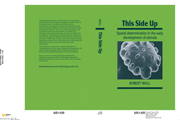Book contents
- Frontmatter
- Contents
- Preface
- Acknowledgements
- 1 Oogenesis
- 2 From oocyte to zygote
- 3 Does cleavage cut up a preformed spatial pattern?: the case of spiralian embryos
- 4 The limits of mosaicism in non-spiralian cleavage
- 5 Cellular interactions in the morula and blastula: the case of sea urchin embryos
- 6 Interactions at morula and blastula in other embryos
- 7 Interactions between moving cells: the case of amphibian gastrula
- 8 Spatial determination in the gastrulae of other groups
- 9 Determination in embryos showing partial cleavage
- 10 Patterns and mechanisms in early spatial determination
- References
- Index
10 - Patterns and mechanisms in early spatial determination
Published online by Cambridge University Press: 06 October 2009
- Frontmatter
- Contents
- Preface
- Acknowledgements
- 1 Oogenesis
- 2 From oocyte to zygote
- 3 Does cleavage cut up a preformed spatial pattern?: the case of spiralian embryos
- 4 The limits of mosaicism in non-spiralian cleavage
- 5 Cellular interactions in the morula and blastula: the case of sea urchin embryos
- 6 Interactions at morula and blastula in other embryos
- 7 Interactions between moving cells: the case of amphibian gastrula
- 8 Spatial determination in the gastrulae of other groups
- 9 Determination in embryos showing partial cleavage
- 10 Patterns and mechanisms in early spatial determination
- References
- Index
Summary
The preceding chapters have reviewed the available data on spatial determination in the early development of a great variety of animals. It is hoped that this will provide a useful database for researchers active in or entering the field, both circumscribing the possibilities and suggesting new avenues of approach for the model builders and the molecular embryologists. It is particularly encouraging when the data from different animal groups indicate common phenomena and possibly common underlying mechanisms. In this final chapter we will seek to identify such basic features and consider how they may have been modified in the development of different types of embryo.
Patterns
It is clear that oocytes possess little preformed spatial pattern. In some cases not even the primary polarity is determined, e.g. in ctenophores where it is apparently fixed at fertilisation. In other cases it is probable that this axis is fixed but few developmentally important materials have been localised along it, since fragments cut from oocytes and eggs so often succeed in developing as miniature larvae. Determinants of various larval structures could, however, be present even in concentrically organised oocytes, as is shown by ascidian development. There three plasms can be recognised in an approximately concentric arrangement within the unfertilised egg, and following fertilisation they flow to new positions defining a bilaterally symmetrical pattern. This pattern is of undoubted importance for further development, although whether it represents a mosaic of tissue-specific determinants remains to be discussed later.
- Type
- Chapter
- Information
- This Side UpSpatial Determination in the Early Development of Animals, pp. 304 - 319Publisher: Cambridge University PressPrint publication year: 1990



